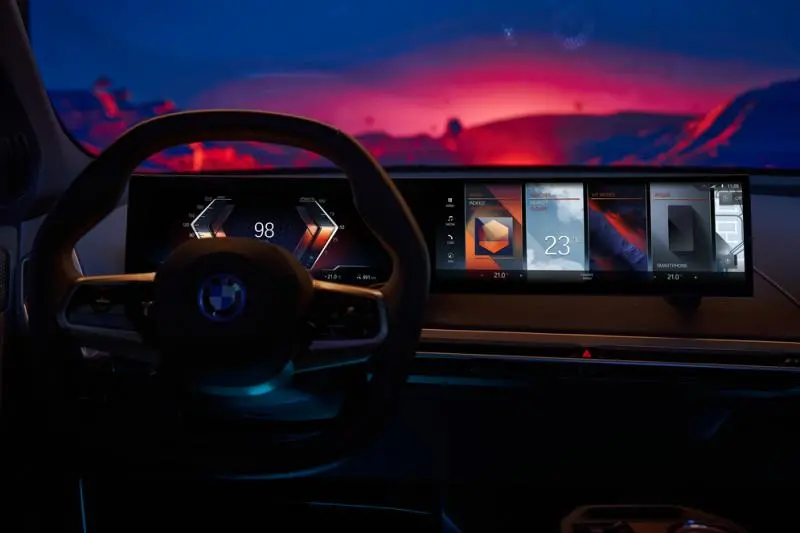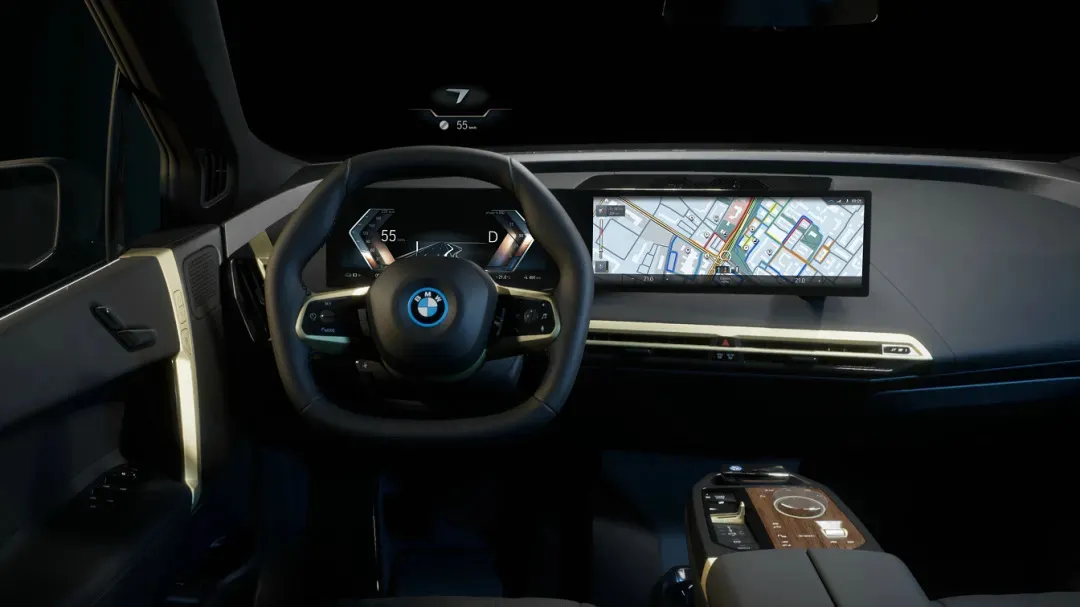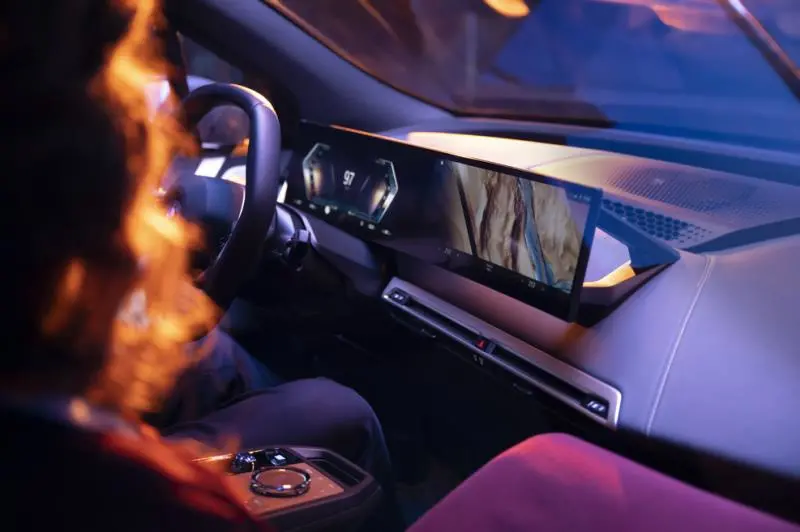If you had to choose an intelligent operating system or intelligent cockpit that best represents the trend of the future automobile industry, the answer is likely to be Tesla Model 3, NIO ES6, LI ONE, or even Porsche Taycan. Very few people would give this vote to any of the “BBA” model cars.
However, if you ask the owners of luxury brand cars about their satisfaction with the use of operating systems, I believe BMW’s “inherited” iDrive system is definitely among the top. As a user of iDrive 7.0, I personally think that BMW has achieved the peak and ultimate functionality of iDrive system within the traditional cockpit framework. Although its learning curve is relatively high, once you are accustomed to its operating method and logic, its efficiency and safety are extremely high.
However, the “great leap forward” of new forces in intelligence seems to have disrupted the rhythm of traditional automakers, and the competition among luxury brand products has also shifted from traditional “mechanical horsepower” to “digital horsepower”. When Mercedes-Benz once again broke through the boundary of cockpit design with the new S-Class, I am more looking forward to what BMW, the “pragmatist”, can do to make itself less awkward, so iDrive 8.0 came.
It’s a time for face-value judgment
Regardless of whether it is easy to use, the impact of intelligence on automotive cockpit interior design is huge. The cancellation of physical buttons and the large-screen central control seem to be unavoidable “laws”, or in other words, a “politically correct” practice. It is precisely because of this “politically correct” approach that when some people see that the brand-new iDrive 8.0 from BMW still retains the control knob and adopts a dual-screen design, they would blurt out: too conservative.
Who says control knobs and dual screens are “outdated”? In terms of hardware, BMW integrates the full LCD instrument panel and central control screen into one, presented on a huge curved screen. The curvature of the curved screen is centered around the driver, creating a suspended screen effect through the support behind the screen. This layout not only makes the screen more technological, but also reduces the angle of deviation of the driver’s line of sight when checking the information on the central control screen, and reduces the distraction on the driver’s line of sight.As a classic design of the iDrive system, the original plastic texture of the control knob has been replaced by a crystal-like glass decoration, matched with metal inlays and wooden center console panels, replacing nearly 50% of the physical buttons in the cabin. The cutting design of the crystal control knob makes the knob look textured and ensures control sensitivity, allowing the driver to accurately control it even in blind operations. I think the retention of the control knob also represents to some extent that BMW is still a brand that “values driving experience”.
On the other hand, matched with a more youthful interior design, the UI style of the BMW iDrive 8.0 system has also undergone significant reforms.
If the UI design of the previous generation iDrive was quite “old school”, then the new generation UI design can be said to be younger and more aggressive. The center screen design continues the card-style design, but the graphic design is bolder, and the use of color is more daring. Cards of different colors correspond to different functions. The bright gradient colors, combined with cool light and shadow effects, enable people to “recognize functions by color” while driving.
Whether or not the car multimedia system is user-friendly depends on the interaction. Similar to the previous generation system, iDrive 8.0 still maintains the multimodal interaction of control knob + touch screen + voice + gesture control. The retention of the classic control knob, the larger touch screen, and the UI interface with stronger usability upgrade the interaction mode of this iDrive system. According to official sources, the improvement in voice interaction is the most significant.
This time, the “intelligent voice assistant” launched by iDrive 8.0 is presented visually with differently sized and colored glowing balls, with a lighter shape and color scheme. The dynamic inhaling and exhaling of the voice assistant during operation also allows people to more intuitively feel the interaction process.“`

In terms of voice interaction, intelligent voice assistants can control more hardware functions, such as adjusting driving modes, supporting voice-set event reminders, accurately controlling various windows of the entire vehicle, and adjusting air conditioning wind direction/amount, etc.
Under the support of AI, voice assistants are not just an interaction mode, but more like an artificial intelligence assistant. For example, the voice assistant can use deep learning of the user’s driving and usage habits to predict the needs of the driver in advance. In different environmental conditions, the “assistant” may know what you want to say as soon as you speak.
With the simplification of cabin control methods, the role of voice interaction is becoming more and more prominent. With more intelligent voice interaction combined with touch control, traditional knobs, and gesture control, the interaction experience will be more complete.
Emotional Design Language
With the upgrade of the intelligent cockpit, people’s demand for the cabin gradually went beyond the realization of technological functions and towards an upgraded immersive experience. The BMW iDrive 8.0 was created under such demand, starting with the emotional design to create a full emotional driving experience.
In the iDrive 8.0 instrument information display and head-up display system, three different themes are provided: Luxury Driving, Focus on Sports and Minimalist Art.

After each mode transformation, the vehicle can not only change the motion parameters like in the previous cockpit to experience the fun of driving under different modes, but also adjust the color, UI interface of the instrument panel, central control screen, and head-up display area, and even the software layout adjustment under different modes, and the sound and smell inside the cabin may change as well, making the sensory experience in each mode more comprehensive and personalized, making technology an interesting thing.

The Underlying Framework Is the Support of the Vehicle System
The realization of software functions cannot be separated from the support of underlying architecture and hardware. This is no exception in the new generation of iDrive system.
“`As the first pure electric flagship equipped with iDrive 8.0, the upcoming BMW iX is equipped with 5G communication technology and cloud service system. Through the centralized onboard network architecture and several high-performance computers, iDrive 8.0’s functions can be realized on the integrated underlying electronic architecture. At the same time, the high-speed interconnectivity of 5G also allows the fastest transmission speed of iDrive 8.0 to reach 30Gbit per second, which is 10-20 times that of current vehicles. With the combined effect of 5G and cloud services, iDrive 8.0 can complete remote OTA within 20 minutes, and the centralized architecture allows for upgrading of individual functions and configurations.
In late 2020, BMW has launched the largest-scale remote software upgrade among European manufacturers. By the end of 2021, there will be 2.5 million BMW vehicles worldwide that can be remotely upgraded, making it the world’s largest remotely upgradable fleet.
Final Thoughts
On iDrive 8.0, we can see BMW’s attitude towards the in-car system, balancing tradition with innovation to create a continuously improving in-car experience. After all, the avant-garde design or conservative style is just the physical carrier of the in-car system. Providing a comfortable interactive experience is the real pursuit of people for the in-car system.
This article is a translation by ChatGPT of a Chinese report from 42HOW. If you have any questions about it, please email bd@42how.com.
